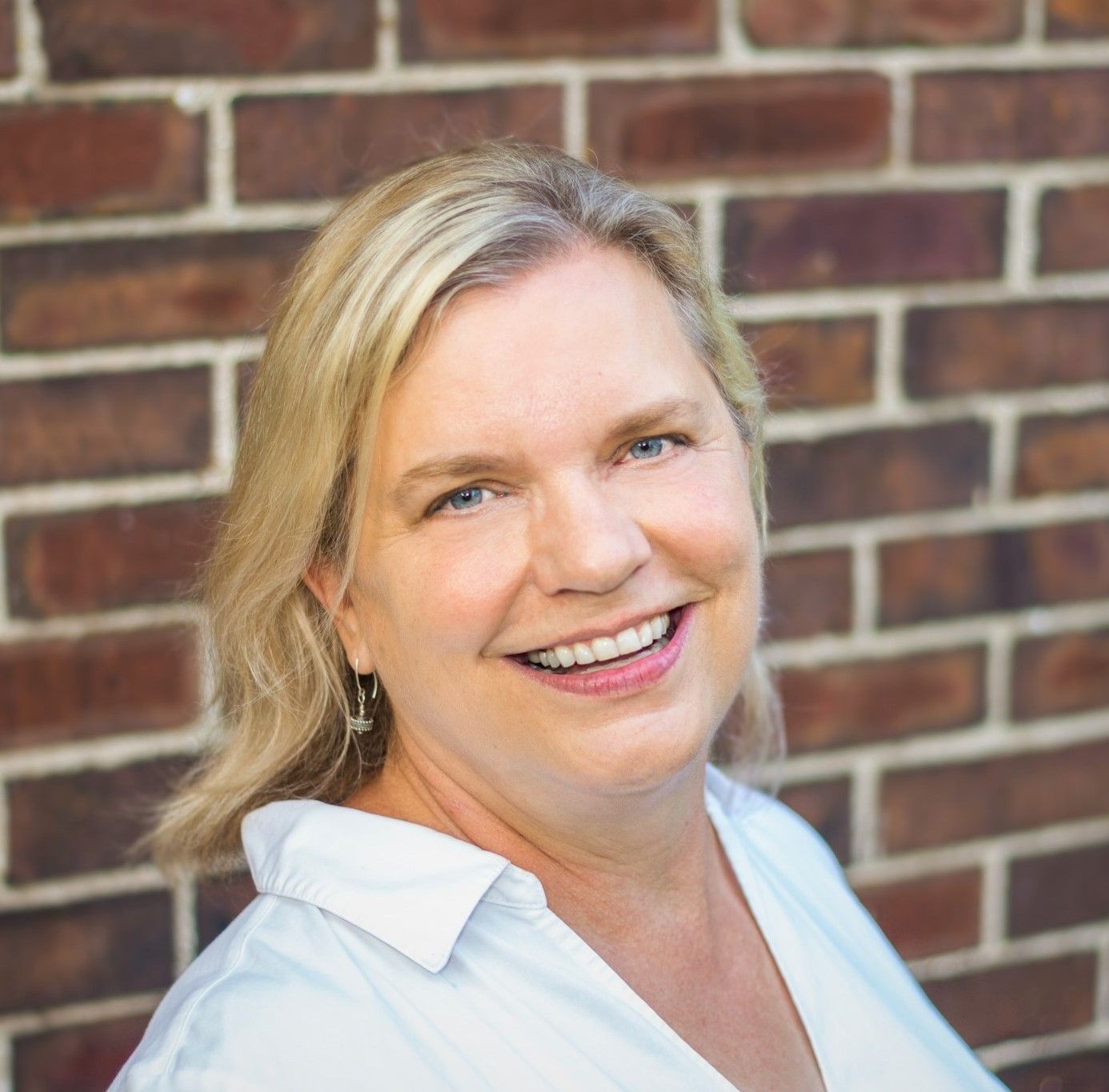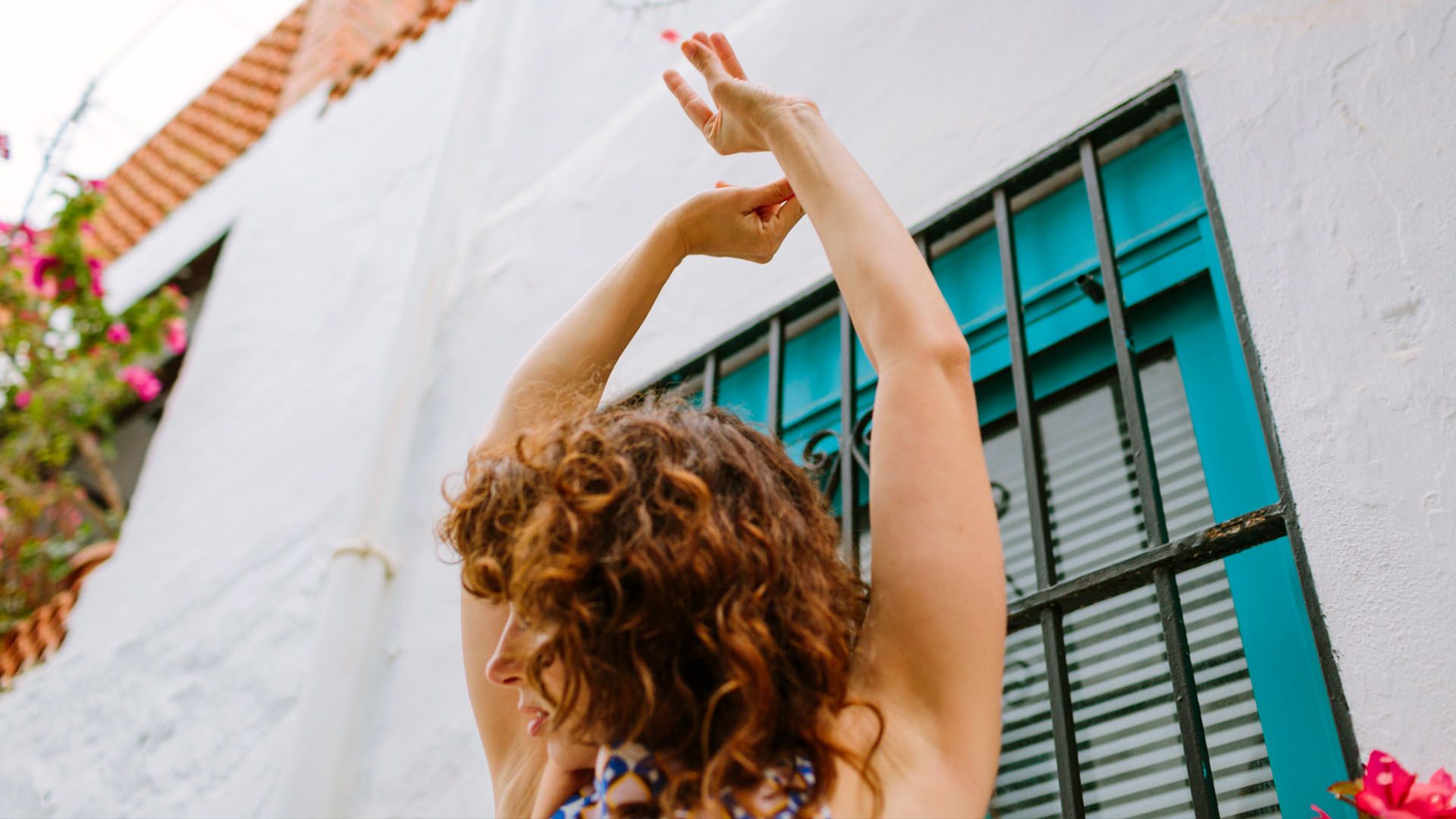It’s mindfulness with a beat. The growing trend of conscious dance can help you get back in touch with your body — even if you think you can’t dance.
It’s a Tuesday lunch hour and I am spending it way out of my comfort zone. Though the last time I really danced was in a crowded frat basement decades ago, thanks to the magic of Zoom I have joined my first-ever JourneyDance class.
Some 50 of us, a range of ages and abilities, are barefoot, swaying and flopping in our little screen squares. Our teacher, JourneyDance founder Toni Bergins, is an exuberant woman dressed playfully in head-to-toe red. (It’s Valentine’s Day.) She invites us all to “express ourselves creatively and tell our story to the dance floor.” During the hourlong session, we follow her lead and roll in big circles on the floor, dance around an imaginary “heart fire” that we toss our negative feelings into, and send our wishes up to the universe by raising our vibrating arms skyward.
There are no correct postures or steps to perfect here. “Move as your body wants to,” Bergins instructs. Grunting is encouraged, as is laughing or crying — whatever comes up. Panning our Zoom gallery, I see a woman’s dog has joined in. During one high-energy dance tune, we each grab a colorful scarf and let them billow and snap in bright arcs around our bodies.
I would characterize the session as a combination of meditation class, dance party, and group therapy. By the time the final cooldown meditation is over, I feel exhilarated, refreshed, and happily sweaty.
The Rise of the Conscious Dance Trend
This class is just one example of the growing field of “conscious dance.” Nicknamed the “yoga of dance” by some practitioners, conscious dance comprises a wide variety of body-mind approaches and techniques. What sets it apart as a dance category: It is NOT about learning precise steps, preparing to nail a performance, or simply working out to a beat.
“Conscious dance is not about what you look like; instead it’s about personal expression and healing,” says holistic fitness expert and DailyOM class instructor Alice Bracegirdle. “We reconnect with our bodies in a loving, nonjudgmental way.” Many forms involve some combination of breathwork, music, and interpretative movement.
Of course, dance is an ancient form of expression. “We have always moved our bodies, our hips, our feet, intuitively and instinctually. Before instruments, we danced to the clapping of hands, to the sound of chanting,” says Bracegirdle. “It’s a primal impulse to move our energy in this way.”
“I would characterize the session as a combination of meditation class, dance party, and group therapy. By the time the final cooldown meditation is over, I feel exhilarated, refreshed, and happily sweaty.”
The rise of the current field of conscious dance in this country may be traced back to the New Age movement of the 1970s and ’80s. Today, various forms of conscious dance have taken root in yoga studios and community centers. In New York City, for example, substance-free “ecstatic dance” parties draw thousands of participants weekly. During the pandemic, Zoom became the dance floor and remains a way to experience conscious dance in one’s own apartment or basement — alone yet together.
Think of conscious dance as mindfulness with a beat. “We all spend so much time in our heads, looking at our little devices. The rhythmic, repetitive nature of dance gets you out of your head and lets you lead with your body. You can surrender to the music,” says Bracegirdle.
As such, conscious dance is especially good for the mindfully challenged like me who have a hard time sitting still and meditating after a long day of sitting still and looking at a screen. “When we use our bodies to speak instead of our words, we get access to another, deeper level of ourselves,” says Bergins.
Interested in learning more? Check out Shakti Warrior Dance for Healing
A Route to Emotional Healing
Conscious dance can also help release emotional blocks that are held in the body, say its teachers. It comes at a time of growing interest in the idea that we store trauma and other emotions in our physical bodies. (This is the point of the bestselling The Body Keeps the Score by psychiatrist Bessel van der Kolk, MD.) “Our issues are in our tissues,” notes Bracegirdle.
Indeed, Bergins tells me that JourneyDance participants can find themselves processing all kinds of emotions that might surprise them, from sadness to joy. “Dancing frees up the energy of the body and lets it flow. It removes blocks and stagnation,” she says. “When I dance, I release the tension, the anxiety, the anger.”
That has been the experience of Katherine Allen, a trained conscious movement facilitator and cofounder of CT Conscious Movement. “After a recent class, a student shared that she had lost a family member three months ago and had not been able to access her grief,” Allen tells DailyOm. “It was only during our movement class that she felt she could start to connect with her feelings about her loss.”
A 2021 study in the journal Complementary Therapies in Clinical Practice bears out such effects. It surveyed 1,000 subjects who participated in some form of conscious dance. Eighty-one percent of them self-reported stress-related health conditions, including depression and chronic pain — perhaps what made them gravitate to this healing modality in the first place. A whopping 98 percent said the practice improved their mood. A large percentage said dancing helped them “let go of distressing thoughts” and “feel more present in their bodies.”
Many also reported it boosted their compassion for others. Indeed, as an antidote to the epidemic of loneliness we are experiencing, conscious dance can offer a profound connection, say its teachers. “When we dance together, we get in sync,” Bracegirdle explains.
Plus, it’s just plain fun. At one point during my recent class, I imagined my body was a piece of seaweed, swaying with the ocean current, and I started laughing as I undulated back and forth. Some childlike silliness in the middle of a packed day of adulting. Who couldn’t use more of that?
5 Types of Conscious Dance
If you are interested in trying a conscious dance class, keep in mind that some forms have more structure than others. “A teacher can guide you so you can approach your dancing more mindfully,” says Allen. “Where in your body do you feel stuck? Where do you feel spacious?” Other types are meant to be more of a freeform party.
Here’s a quick sampler to get you moving. These types of classes are accessible online and through teachers across the country.
1. Shakti Warrior Dance
In the Hindu tradition, “shakti” is our vital energy envisioned as a serpent coiled at the base of the spine. Through breathwork, movement, and dance moves, Shakti Warrior Dance participants learn to move this energy, unlocking the body’s seven chakras, or energy centers. Set to electronic music, you will work up a happy sweat as you do so. In the process you may get in touch with your inner warrior. “Once unlocked, we can use this energy in a focused way, take up space, fight for ourselves and what we believe in. That is what makes it so powerful,” says Bracegirdle.
2. 5Rhythms
Created in the 1970s by dancer Gabrielle Roth, 5Rhythms is one of the first forms of conscious dance to become popular in the U.S. In class, dancers move their bodies through five stages of rhythm — flowing, staccato, chaos, lyrical, and stillness — as a form of moving meditation.
3. JourneyDance
This is the class I mentioned at the beginning of this article. Created by Toni Bergins, who has a background in physical improv, among other talents, JourneyDance leads students on a body-mind “journey” — a sequence of warm-up, release, joy, and integration — in a combination of structured and freeform movements. It is an empowering mixture of music, ritual, movement, and theater designed to help you get back in touch with your body.
4. Ecstatic Dance
Ecstatic dance is the most open-ended form here. Typically set to electronic or world music, these gatherings are usually presided over by a DJ rather than a teacher. Some basic rules: no drugs or alcohol, no phones, no talking on the dance floor. You can dance with the other participants or alone, and move however your body wants. Some describe the experience of Ecstatic Dance as being so transporting that it can put you in a trancelike state.
5. Azul
Azul was founded by Amara Pagano, who has taught movement as a spiritual practice for over 30 years. Class participants are encouraged to listen to their bodies, identify places where they may feel their energy is stuck, and open that energy through movement. “It’s about guiding you to deeply connect with your body from the inside out,” says Allen. The goal, she says, is to awaken your potential and your full self-expression by accessing the body’s intelligence. (In a number of spiritual traditions, azul is the color of the celestial realm, and the name carries the vibration of love and perfection, notes the Azul website.)
Conscious-dance teacher Lisa Galinski, a cofounder of CT Conscious Movement, says the practice also facilitates connection with others. “We dance how we live. If you become more open and less caught in your own thoughts in this practice, you are going to show up differently in the world and in your relationships.”

